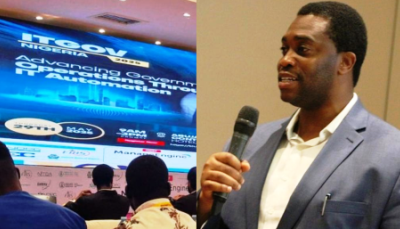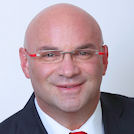 Spacecom’s Eyal Copitt speaks with SEGUN ORUAME, IT EDGE NEWS, on the company’s new satellite with footprint over Africa and its game plan to increase its stakes in the continent’s connectivity market.
Spacecom’s Eyal Copitt speaks with SEGUN ORUAME, IT EDGE NEWS, on the company’s new satellite with footprint over Africa and its game plan to increase its stakes in the continent’s connectivity market.
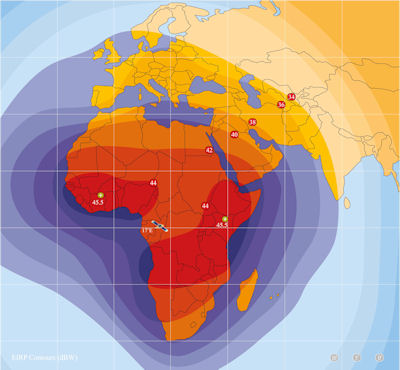 Congratulations on the successful launch of the AMOS-5 satellite. How extensive is the coverage of the AMOS-5 satellite in terms of footprint across Africa; which African countries or sub-regions (East, West, North, South) will benefit from AMOS-5 pan-African C-band and Ku-band payload?
Congratulations on the successful launch of the AMOS-5 satellite. How extensive is the coverage of the AMOS-5 satellite in terms of footprint across Africa; which African countries or sub-regions (East, West, North, South) will benefit from AMOS-5 pan-African C-band and Ku-band payload?
Spacecom’s AMOS-5 satellite, located at the 17°E orbital position, offers a pan-African C-band beam, connecting Europe and the Middle East alongside three Ku-band regional beams. It covers every point in Sub-Saharan Africa from East to West and North to South. The C-band completely blankets all of Africa with its powerful transponders enabling connectivity to Europe and Middle East while our Ku-bands target the various regions of French-speaking Africa, Southern Africa and Central Africa. Its 14×72 MHz and 4×36 MHz C-band transponders combined with 18×72 MHz Ku transponders enable it to be a prime carrier of African traffic in the years to come in both broadcast and data services.
Would the AMOS-5 satellite be merely consolidating on an established market presence on the African continent or would it be the first time that Spacecom will be truly focusing on delivering satellite backbone connectivity to the African market?
Spacecom has a solid presence in Africa with a team of 10 experienced regional sales managers covering the continent. The addition of AMOS-5 fulfills further growth of Spacecom’s vision to become an emerging multi-regional satellite operator. The satellite offers high-powered capacity in C and Ku band to the entire African continent as well as superb connectivity to Europe and the Middle East, enabling our clients to bring their services to more than one area. This added value proposition strengthens our position within the satellite industry. That being said, thanks to our experience working in emerging markets, our teams have a deep understanding of what it takes to make successful deals and provide superior service. With a larger fleet, we can offer more services and support our customers with more capacity to assist their growth. Our teams have created a business model based on bringing added value and top line practices to these markets. We will be working diligently to continue this as we expand further throughout all of Africa.
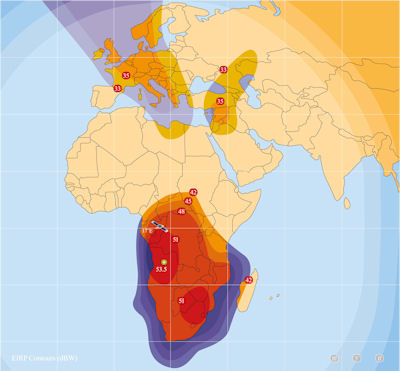 Unlike say 10 years ago, Africa appears to be experiencing a bandwidth or backbone connectivity surge with the commercial launch of several submarine cables and communication satellites focusing on the market here, where does that place AMOS-5 and Spacecom as a result of more fiery competition?
Unlike say 10 years ago, Africa appears to be experiencing a bandwidth or backbone connectivity surge with the commercial launch of several submarine cables and communication satellites focusing on the market here, where does that place AMOS-5 and Spacecom as a result of more fiery competition?
We actually believe that more fiber is good for our business in Africa. As fiber expands in Africa, business and consumers will
realize that new services, especially with broadband Internet, benefit them and will seek out the best operators. This will bring more
business to AMOS-5 and the satellite sector. The rural and outlying areas of Africa will not find fiber cost-effective and will find that
satellite services are competitive having both fast time to market and easy deployment. Thus, as customers in these regions want more content, more applications and more services they will turn to telecom and broadcast operators who utilize satellite. With the strength of AMOS-5’s beams, the satellite will be a player in the African communications scene for the future and will offer its services to throughout the entire continent.
Nigeria’s replacement satellite, Nigcomsat 1R, is billed for launch this month and is expected to be commercially operational from the second quarter of 2012, is this not likely to erase the market potential or prospect for AMOS-5 and Spacecom?
Spacecom already operates our satellites at the 4°W position where there is a great deal of competition. Nicomsat is a relatively small regional satellite and the market is growing, thus we believe that the market will generate business for all of us operating satellites over Africa. We have been successful over the emerging Central and Eastern European markets and have trained our teams to understand local markets and to act leanly and smartly to win and maintain business. In Africa, we welcome competition because it simply makes us better and enables us to provide the best services and reaction times.
What specifically is AMOS-5 bringing to the African market in terms of products and services; what are its unique selling points?
The AMOS-5 was originally planned to cover Africa. Its beams were designed to cover the continent’s main cities and business areas with high EIRP. Our high power pan-African C-band beam and three Ku-band beams completely cover Africa and provide connectivity to Europe and the Middle East. AMOS-5 is an attractive and powerful source of capacity for a variety of African and African-related businesses, including broadcasters, telcos, cellular operators, governments and others. With AMOS-5 one can expand and cover the whole continent with one hop. With its excellent look angle, Spacecom’s AMOS-5 offers a variety of satcom services, including:
• VSAT communications and broadband Internet
• Telephony services
• Data trunking
• Cellular backhaul
• Direct-to-Home (DTH) TV broadcasting
• Video distribution
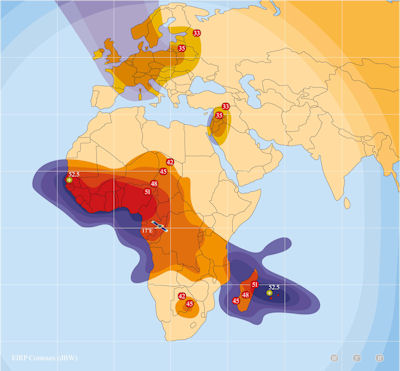 Who are your local partners in Africa and how do customers get assurance of a service support critical to realtime operations in most of endpoints where your services will be utilized?
Who are your local partners in Africa and how do customers get assurance of a service support critical to realtime operations in most of endpoints where your services will be utilized?
In Africa, we are working with numerous experienced agencies from the satellite sector. We are partnering with groups operating teleports across Africa and Europe who provide services and VNOs over AMOS-5. Spacecom provides 24×7 customer support from our Ground Control Center in Israel. Every support call is handled with utmost attention. We consider service and support a pillar of our strategy.
Kindly share with our readers a brief resume of Spacecom and when it started focusing on Africa and where its key base is currently located? Simply put, describe your operations in Africa so far?
Africa had been in Spacecom’s sights for some time. In 2006, our Board of Directors decided that the communications market in Africa was evolving, so AMOS coverage for the continent made strategic sense. With a growing population, the ability to capture more infrastructure investments leading to a modernization of communications platforms and its attractiveness for business, the continent represents an important element of our business strategy. We are also building a complete sales and support structure in major markets in the East, West, and Southern Africa. Alongside the AMOS-5 at 17°E, Spacecom operates the AMOS-2 and AMOS-3 satellites, co-located at 4°W. These provide high quality broadcast and communications services in Europe, the Middle East and the U.S. East Coast to direct-to-home (DTH) and direct broadcast satellite (DBS) operators, ISPs, telecom operators, network integrators and government agencies. Following the successful launch of AMOS-5, Spacecom has become an emerging multi-regional satellite
operator. The company is currently planning the launch of AMOS-4 in 2012 over Russia and Asia, and AMOS-6 in 2014 over Europe and the Middle East including a new Ka spot beam technology for broadband services in Africa and the CEE region.
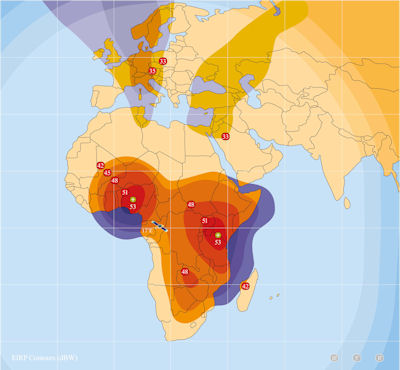 What does the future hold for satellite services in the increasingly sophisticated African market; will the demand for satellite go up or come down in the face of increasing presence of submarine and terrestrial connectivity infrastructures?
What does the future hold for satellite services in the increasingly sophisticated African market; will the demand for satellite go up or come down in the face of increasing presence of submarine and terrestrial connectivity infrastructures?
Spacecom sees satellite services in Africa as a growth market. With increasing sophistication and game changers, especially the addition of new fiber, the right conditions are being created for the acceleration of communications services and businesses to serve the continent. With more fiber, business and consumers will seek better communications services – especially Internet – and this will bring more business to the satellite sector. More fiber in Africa means that more content can be brought to the continent and can be locally elaborated and distributed. This enables a greater focus on the regional and local level for programming and thus deepens local
communications business operations. We believe that this will speed up the trend toward creating local hubs in Africa. These local hubs enhance communications speeds and quality, open broadband Internet for mass consumption and lower the barriers for enterprises to add Internet services. With more local hubs, telcos and providers will seek improved quality and reach and look for satellites, such as the AMOS-5 to bring these services to various regions. The power of the AMOS-5 places it at the center of the communications landscape for years to come and by supplying fast and reliable service. Overall, primarily due to costs and issues of
technical service to fiber, satellites will be the solution of choice for reaching rural areas and the large swaths of non-urban areas in Africa.





